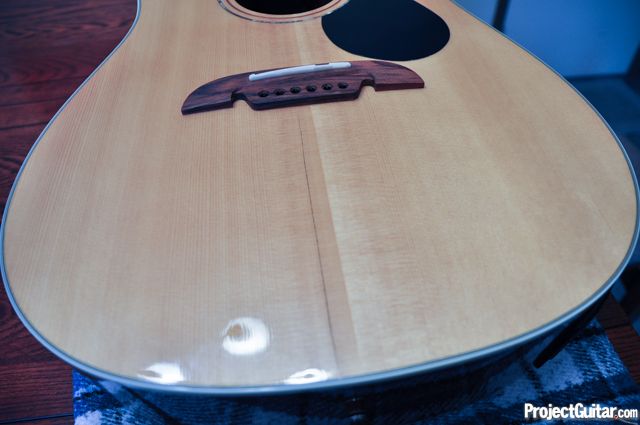profchris
Established Member
I've seen quite a few posts recently where the answer was 'humidity has made it move'. Humidity can be a mystery, especially when you're starting out.
Because I make guitars and ukuleles, which quickly fall apart if you don't understand humidity, I've had to read up on it lots. So I thought I'd write up the basics in case they help someone avoid ruining a project.
1. Humidity is the moisture in the air, and it changes all the time. The BBC weather app (and others probably) will give you hourly humidity forecasts throughout the day.
2. Wood constantly absorbs and loses moisture from the air, as the atmospheric humidity rises and falls. Even if it's 'well-dried'. Wood is constantly changing its moisture content.
3. Wood moves as it become more humid, mainly across the grain and hardly at all along it. Different species move different amounts - mahogany moves maybe 2%, pine more like 4%. So if your board is 100mm wide, it might grow as much as 4 or 5 mm across.
4. If the end grain shows curves in the grain, it will cup in that direction as it swells. The longest lines in the curves swell most.
5. You can't stop it moving (short of bolting it to a very sturdy framework, say heavy angle iron). It's going to move, so design and build to cope with that.
6. If you build in one level of humidity (say your workshop) and move the piece to a different humidity (say indoors, where the heating dries the air), your piece will change shape. If the humidity changes in your workshop, it will move too.
This is all you need to know, if you're prepared to think about how that translates into design and build. It explains the rules which experienced woodworkers tell you, such as:
Alternate the cupped grain on table tops (they'll still go a bit wavy, but if all the cupping is in the same direction they will imitate a banana)
Don't glue in panels (they expand and shrink cross grain, but are surrounded by long grain which hardly moves at all)
For guitar makers, build a dome in your tops and backs (when they move they will simply rise or fall a little rather than tearing themselves apart if they shrink or expanding into the body)
Glue up in low humidity to avoid panels which must be fixed (like guitar tops) cracking in lower humidity
And so on ...
Because I make guitars and ukuleles, which quickly fall apart if you don't understand humidity, I've had to read up on it lots. So I thought I'd write up the basics in case they help someone avoid ruining a project.
1. Humidity is the moisture in the air, and it changes all the time. The BBC weather app (and others probably) will give you hourly humidity forecasts throughout the day.
2. Wood constantly absorbs and loses moisture from the air, as the atmospheric humidity rises and falls. Even if it's 'well-dried'. Wood is constantly changing its moisture content.
3. Wood moves as it become more humid, mainly across the grain and hardly at all along it. Different species move different amounts - mahogany moves maybe 2%, pine more like 4%. So if your board is 100mm wide, it might grow as much as 4 or 5 mm across.
4. If the end grain shows curves in the grain, it will cup in that direction as it swells. The longest lines in the curves swell most.
5. You can't stop it moving (short of bolting it to a very sturdy framework, say heavy angle iron). It's going to move, so design and build to cope with that.
6. If you build in one level of humidity (say your workshop) and move the piece to a different humidity (say indoors, where the heating dries the air), your piece will change shape. If the humidity changes in your workshop, it will move too.
This is all you need to know, if you're prepared to think about how that translates into design and build. It explains the rules which experienced woodworkers tell you, such as:
Alternate the cupped grain on table tops (they'll still go a bit wavy, but if all the cupping is in the same direction they will imitate a banana)
Don't glue in panels (they expand and shrink cross grain, but are surrounded by long grain which hardly moves at all)
For guitar makers, build a dome in your tops and backs (when they move they will simply rise or fall a little rather than tearing themselves apart if they shrink or expanding into the body)
Glue up in low humidity to avoid panels which must be fixed (like guitar tops) cracking in lower humidity
And so on ...






































